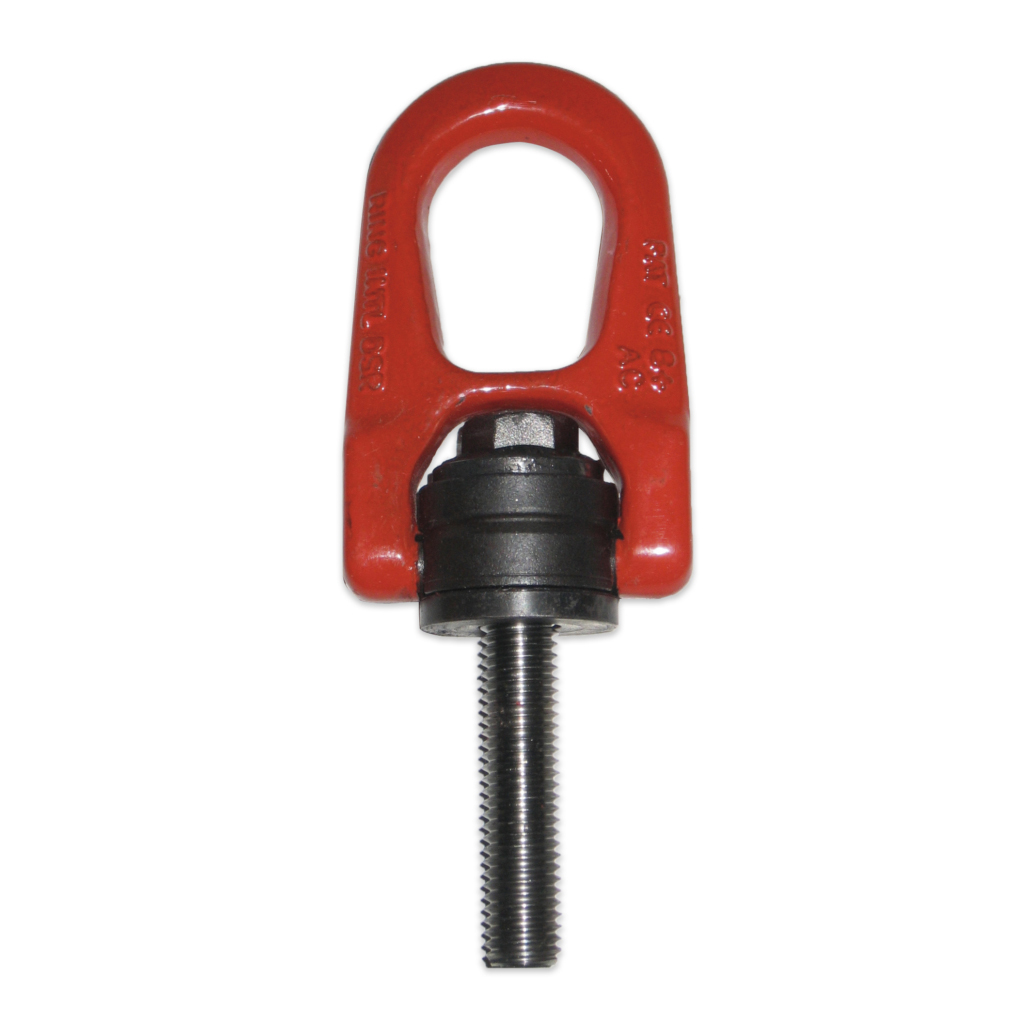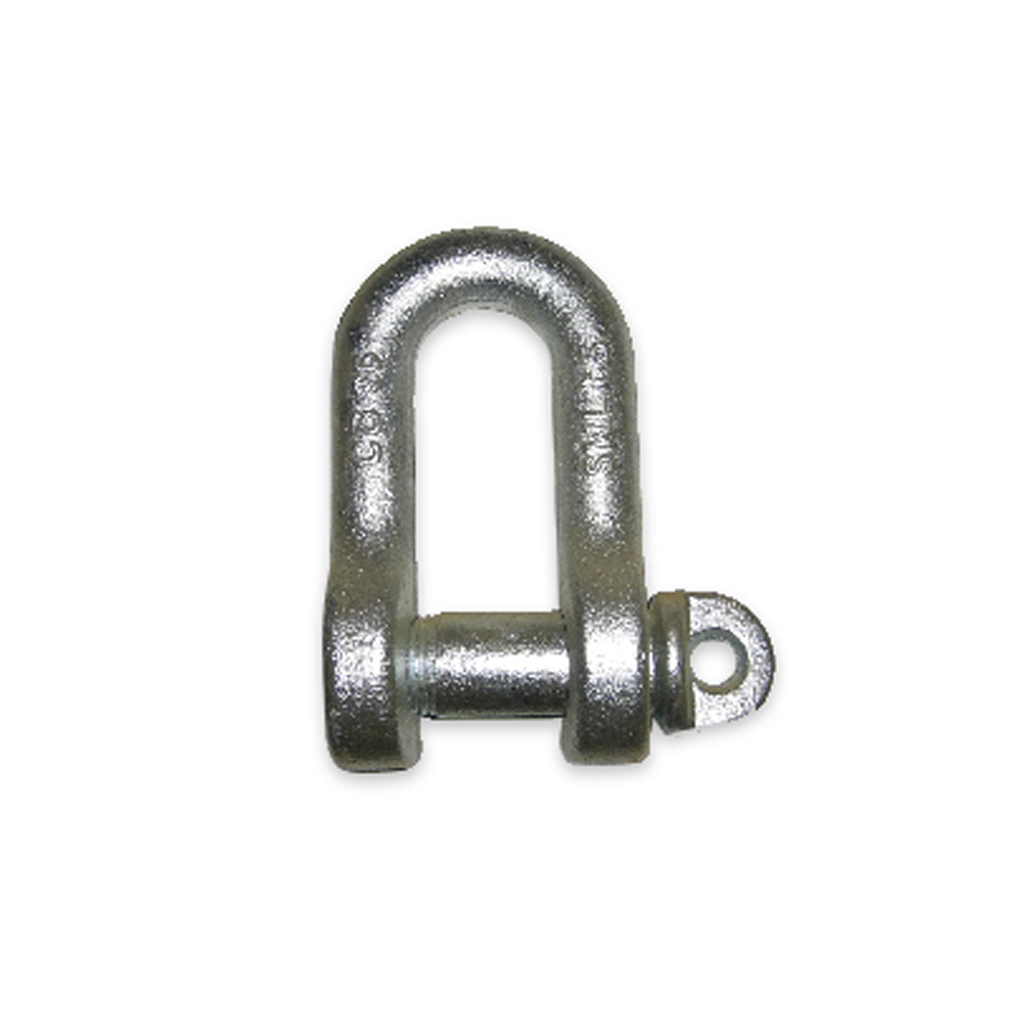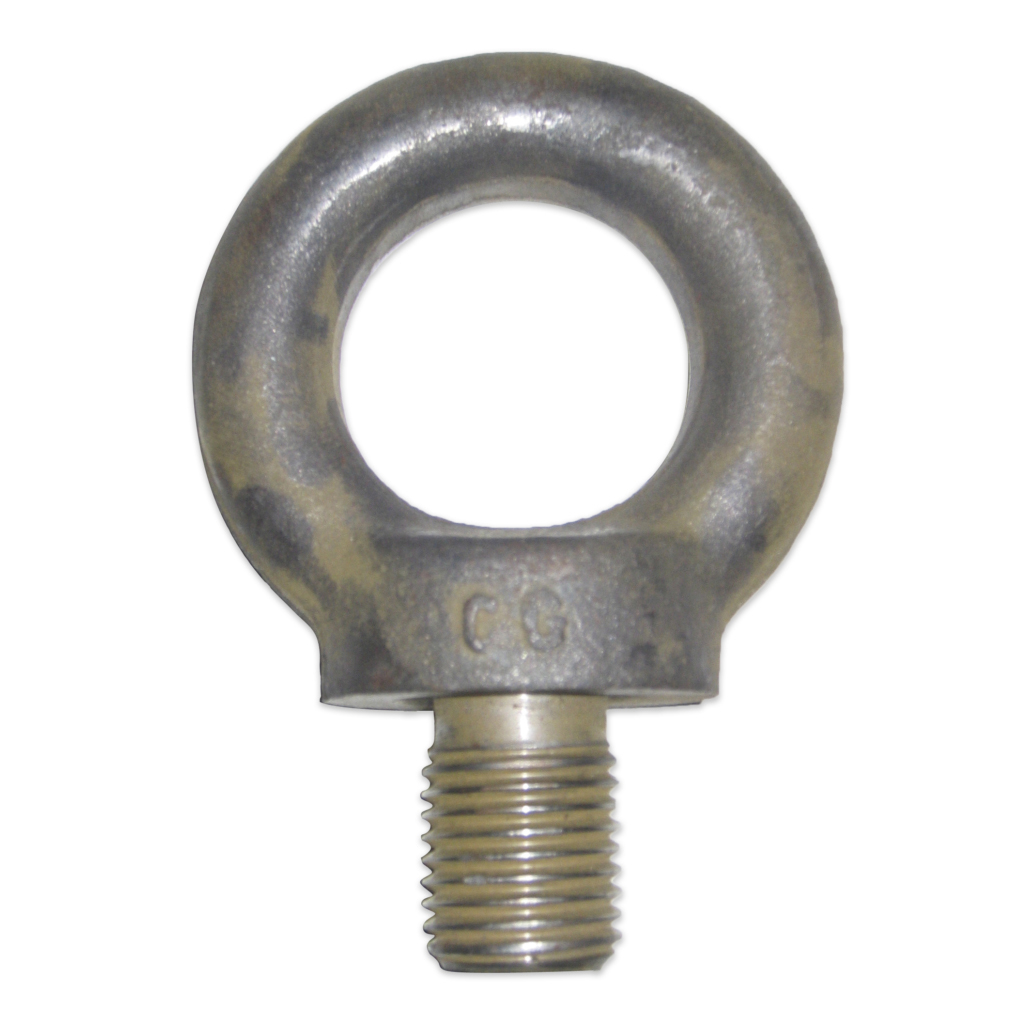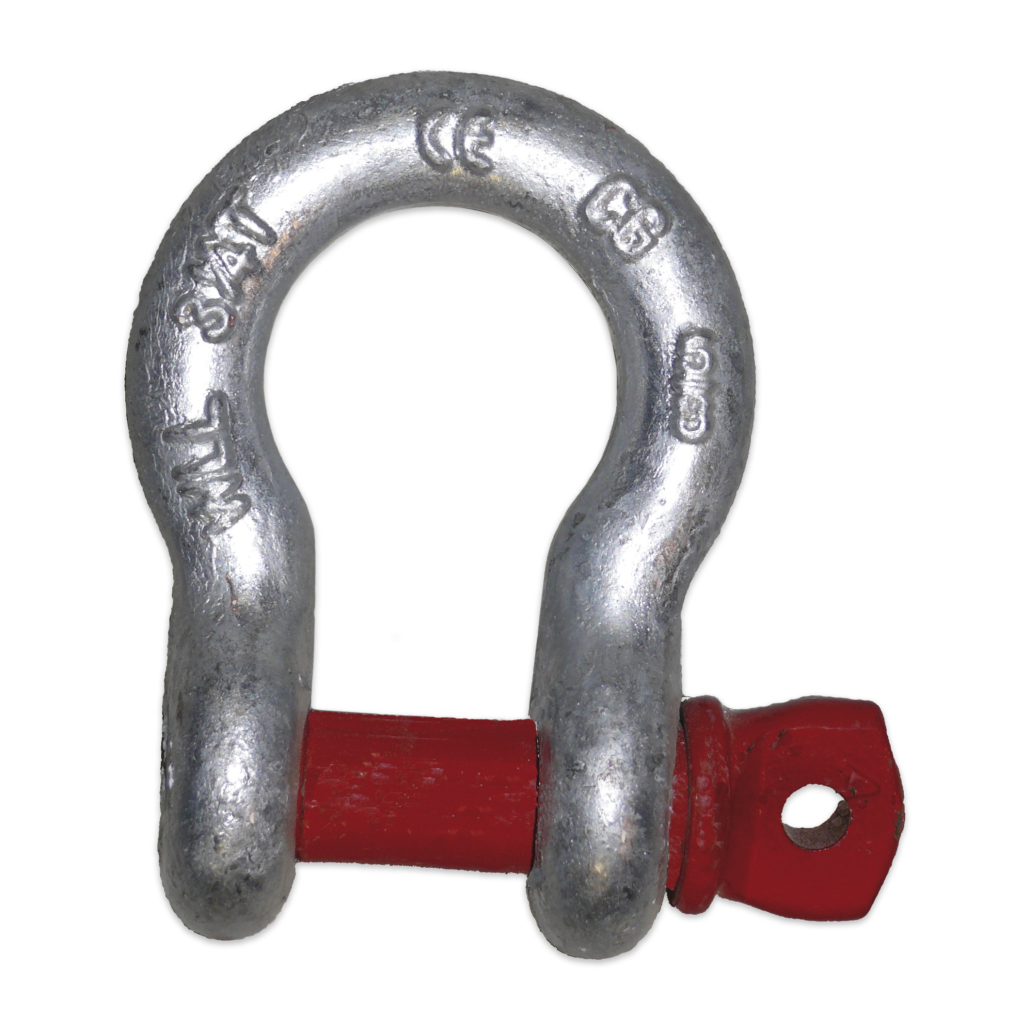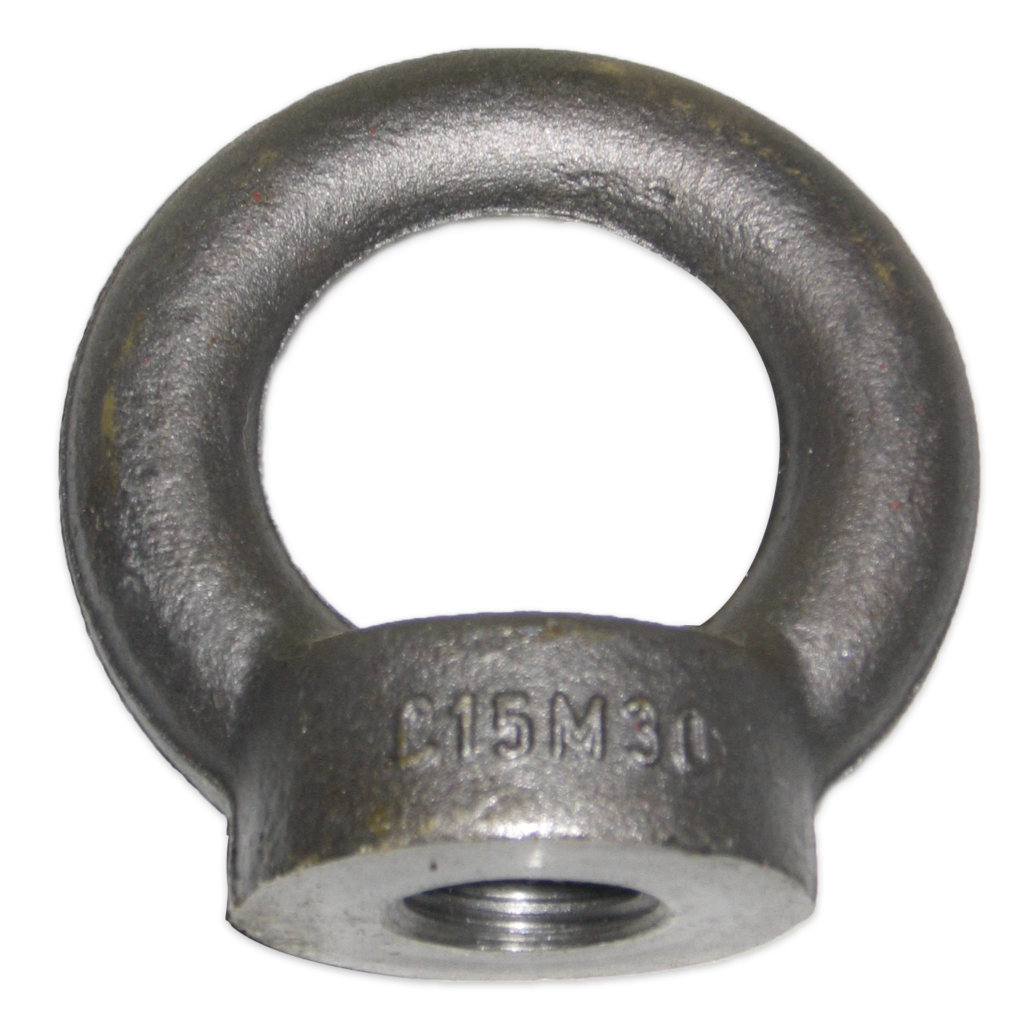Eyebolts
Read more
Eyebolts are rings that are attached to boxes, machinery or other heavy objects in order to facilitate or allow their lifting or anchoring. Eyebolts can also be used as simple connecting elements or anchor points.
Description
The lifting is done by passing a metal cable through the eye of the eyebolt, which is then hooked to the hook of the lifting gear, or by directly inserting the hook into the eyebolt.
Eyebolts can also be used in many other applications, for example for anchoring heavy loads on transport vehicles or towing vehicles.
Eyebolts can be immovable, e.g. welded to the structure to be lifted, or can be dismantled, and in this case they are equipped with a threaded shank (male eyebolt) or a threaded hole (female eyebolt). They can be fixed, adjustable or articulated. An eyebolt is called adjustable if the ring is able to rotate on one axis and articulated if the ring can move on at least two axes. Of particular importance are safety eyebolts, which are designed to minimize the risk of accidents.
In naval equipment, the eyebolt is a metal ring firmly secured to the hull or other structures of the boat, which is used to attach hoists, pulleys, ropes, draft anchors, etc. Similar functions are also found in aeronautical equipment.
EU safety directives relating to eyebolts
The Community Directive EN 2006/42/EC includes lifting accessories. This means that the manufacturer/importer of eyebolts, if they are intended for lifting, must comply with all requirements specified by the EU Directives for the sale of eyebolts in EU countries.
Compliance with all EU standards and specifications is ensured by the eyebolts’ CE marking.
N.B.: the user is also obliged, in accordance with the laws and regulations relating to safety at work, to ensure that the eyebolts, if they are used for lifting, have all the characteristics required for CE marking and comply with the Reference Tables before they are put into use.
Eyebolts, when used for lifting, can be constructed based on a manufacturer’s design that meets the requirements of the EU Directive. The most commonly used reference tables for eyebolts are DIN 580:2018 for male eyebolts and DIN 582:2018 for female eyebolts.
However, there is no shared European technical standard covering all existing eyebolt sizes and types (another technical standard is EN ISO 3266 2010-5).
The EU Directive and reference tables set out the following mandatory requirements for the sale and use of eyebolts in the EU:
- Eyebolts must be CE marked in the prescribed form.
- Eyebolts must be indelibly marked with the manufacturer’s mark.
- The manufacturing batch must be indelibly marked on the piece (traceability in case of defect).
- The capacity (WLL – Working Load Limit) for straight pull must be indelibly marked on the piece with the addition of an arrow indicating the direction of pull relative to the indicated capacity.
- The steel code used by the manufacturer must be indelibly marked on the piece.
- The thread size must be indelibly marked on the piece.
- Operating instructions must be available.
In addition:
- The manufacturer-importer must perform two tests on different eyebolts for each manufacturing batch, i.e. two axial pull tests and two orthogonal pull tests. The result of these tests must not be less than six times the load capacity (WLL) marked on the eyebolts.
- The manufacturer-importer must ensure (or possess the relevant certificate for) the chemical analysis and mechanical tests for the type of steel used for each batch of manufacture. The chemical composition and mechanical values of these tests must comply with the requirements of the reference table.
- The manufacturer-importer must be able to trace, at all times, all the purchasers of a manufacturing batch of eyebolts in the event of an anomaly in the material and/or mechanical processing. In consideration of this, the manufacturer/importer must indicate, on the delivery document provided to the customer, and/or on the sales invoice, the manufacturing batch for each type of eyebolt sold.
- The manufacturer/importer must issue, upon request, the certificate 3.1 EN 10204 (2.2 EN 10204 for the above tables) for each manufacturing batch, and the user, if not in possession of this certificate, must request it, before using the eyebolts, at the commercial outlet where it made the purchase, or at the manufacturer-importer if the commercial outlet where purchase was made is no longer traceable.
This certificate must be issued free of charge as it constitutes an integral part of the standards and reference tables.
Failure to fulfil the requirements described above, in accordance with workplace safety laws and regulations, entails joint liability for the purposes of civil and criminal proceedings, both on the part of the manufacturer-importer that has not complied with EU standards and reference tables, and on the part of the user who has not verified that it is in possession of all the necessary requirements for use of the eyebolts.
Instructions for the safe use of eyebolts
According to the Machinery Directive, each lifting accessory or batch of lifting accessories must be accompanied by instructions that provide at least the following information:
- Intended use
- Usage limits
- Assembly instructions
- Static test coefficient used
The following operating instructions apply to DIN 580:2018 male eyebolts and DIN 582:2018 female eyebolts.
-
- Fully tighten the eyebolt. The maximum load capacities refer to eyebolts that are correctly tightened to the object to be lifted. When using levers or mechanical means to tighten the eyebolt, be sure not to cause excess tension in the shank. Tension the ropes and/or hooks before starting the lifting operation.
- In the case of through-holes, a nut (thickness=0.8 x thread diameter) should be used that is fully screwed in and secured. If the screw thread is long enough, we also recommend using a washer with the nut.
- The maximum capacity (WLL) indicated in kilograms. On eyebolts refers to straight pulling.
- When pulling with several eyebolts, align the rings with the correct tightening or by means of thick washers with at least the same diameter as the eyebolt support surface.
- The maximum load capacities (WLL) refer to an operating temperature between -20 °C and +200 °C (-4 °F / +392 °F).
- Every time they are used, visually inspect eyebolts for defects such as dents, cracks, sharp burrs, deformation, torn or missing threads, rust or obvious signs of improper storage.
- Comply with the safety regulations in force in your country (if outside the European Community) regarding the use of lifting equipment and/or components.
- The application of particular colours (especially red, used to identify high-strength fasteners) should be avoided, in order to exclude the possibility of error in identifying the characteristics of the eyebolt you are going to use.
- The lateral pull of the ring (orthogonal to the plane of the ring) must be avoided.
Type of eyebolts
With fixed or swivel male thread
With fixed or swivel female thread
With fixed or swivel ring
Grade 80 and grade 100
Welding eyebolt

